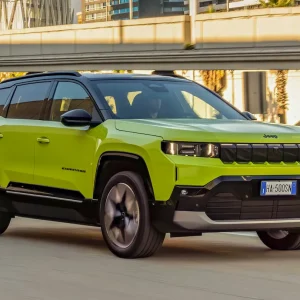When we took hold of the keys for our long-term Kia Sportage six months ago we reported that the carmaker’s intention, at least looks-wise, was to make the car an “object of desire”. We also stated that the Korean brand was pitching the car as an alternative to the Nissan
Qashqai, which, as a previous long-termer of mine, was hugely popular with my family.
Has Kia been successful in its efforts? Well, in terms of driveability the Sportage doesn’t disappoint. The 1.7-litre diesel engine provides decent acceleration and feels more powerful than its 114hp output, and the steering, while not being class-leading, is satisfactory. Ride, also, is good, and there’s a nice balance between that and the handling. The car, with the aid of stop/start technology, proved economical too – a high of 54.2mpg was achieved, and an average of 41.8mpg – and costs at 50.5ppm are competitive with volume rivals such as the Nissan Qashqai, an indicator that Kia is no longer purely a low-cost brand.
The Sportage’s kit in ‘2’ trim – which builds on entry-level features by adding the likes of roof rails and privacy glass for the rear windows and tailgate, and part-leather upholstery [1] – certainly enhances its desirability. However, two extras, while alluring, have given us a few problems. First up are the reverse parking sensors, which are over-sensitive and can be guilty of cheeping away like an excited aviary at nothing in particular. Then there’s the panoramic sunroof [2] . It makes the cabin light and airy and provides relief from the black materials that dominate the cabin, but there is a downside to pulling back the sunblind, and that’s the level of wind noise that comes wind whistling through the gaps around the sunroof seal when travelling at speed. I took the car to the local dealer several weeks ago, who said they would contact me once they’d sourced a replacement part. That part eventually did arrive, but only several long weeks after I initially reported the problem.
Other issues include chunky A-pillars that can block sightlines when turning at a junction, finding a comfortable temperature setting for the cabin [3], and a boot that while large for the class on paper at 564 litres, isn’t the most efficient shape for slotting in luggage for four adults.
Yet despite the complaints, Kia has succeeded in creating a car that’s good to drive and distinctive, and while it might not entirely be “an object of desire”, it is a genuine alternative to the Qashqai, that will be missed.
|
||||||||||||||||||||||||||





